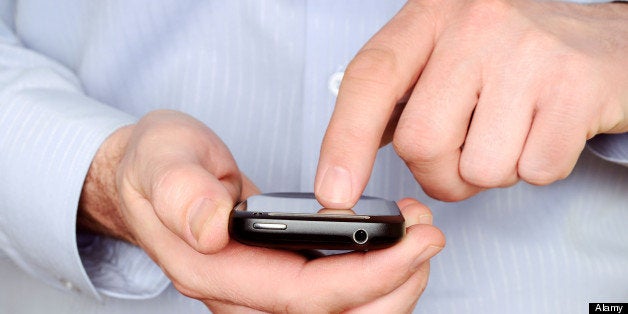
I know what the inside of my ear looks like. Do you?
Chance are, the answer is no. But I had the opportunity to get a "Smartphone Physical" last week while attending the TEDMED conference in Washington D.C., which offers smartphone-assisted health tests -- all the routine tests your doctor would typically perform if you scheduled an appointment to get a physical -- without needing to physically be in an actual doctor's office. (In fact, mine was conducted right in the upstairs lobby of the Kennedy Center in Washington, D.C.)
During the physical, I was able to get my eyes checked out to look for cataracts and diabetic retinopathy, as well as a one-lead electrocardiogram to detect potential arrhythmias. I got an ultrasound of my carotid artery to look for plaque buildup (which would be a sign of atherosclerosis, a risk factor for stroke and heart disease) and had my blood pressure taken. And all of these tests were done using tools that plug right into a smart phone. The data collected from the tools is recorded onto the smartphone, providing a video, an image or a PDF of the data collected by the tools, that can then be sent right to a tech-savvy doctor.
Mike Hoaglin, who is one of the developers of the Smartphone Physical and currently a medical student at the University of Pennsylvania, told me that the point of these tests is to not only make it easier to bring these screenings to the masses -- since they don't have to be done in a traditional doctor's office -- but also to enable people who are at risk for certain conditions to get their health information quickly to the doctor. For example, he explained to me, if a person who has a known history of heart problems starts experiencing some kind of heart event, he or she could use a heart monitor that syncs directly to a smartphone and then send a PDF of the information collected from that one-lead ECG to the doctor. That way, the doctor doesn't have to wait until the patient comes in to see what happened to the heart, but can instead see what happened in real time.
And it's not just the body -- there are smartphone capabilities for eye health, too. The MIT Media Lab's Ramesh Raskar, who I was also able to meet at TEDMED, has developed mobile eye technology that plugs into a smartphone that can provide eyeglass prescriptions -- all on the go.
According to a recent survey from the Healthcare Information and Management Systems Society, more doctors are using mobile technology bedside, as well as to monitor data. But if there's one thing I learned from seeing all the great mobile technology being developed at TEDMED, it's that these mobile health applications can not only empower doctors, but patients too. It can help people like me -- the consumer, the patient -- have a better understanding of my own health. I had no idea what the inside of my ear looked like, or what the inside of a healthy ear should look like in the first place. Or that the carotid artery is one of the best ways to determine stroke risk by looking at plaque build up, and what that looks like in an ultrasound. And while many mobile health tools are clearly targeted toward doctors, all the technology that's also patient- and consumer-friendly can empower us with knowledge about our own health. And that can only be a good thing.
If you want to see what the inside of my ear looks like, watch the video below (taken using the CellScope Otoscope):